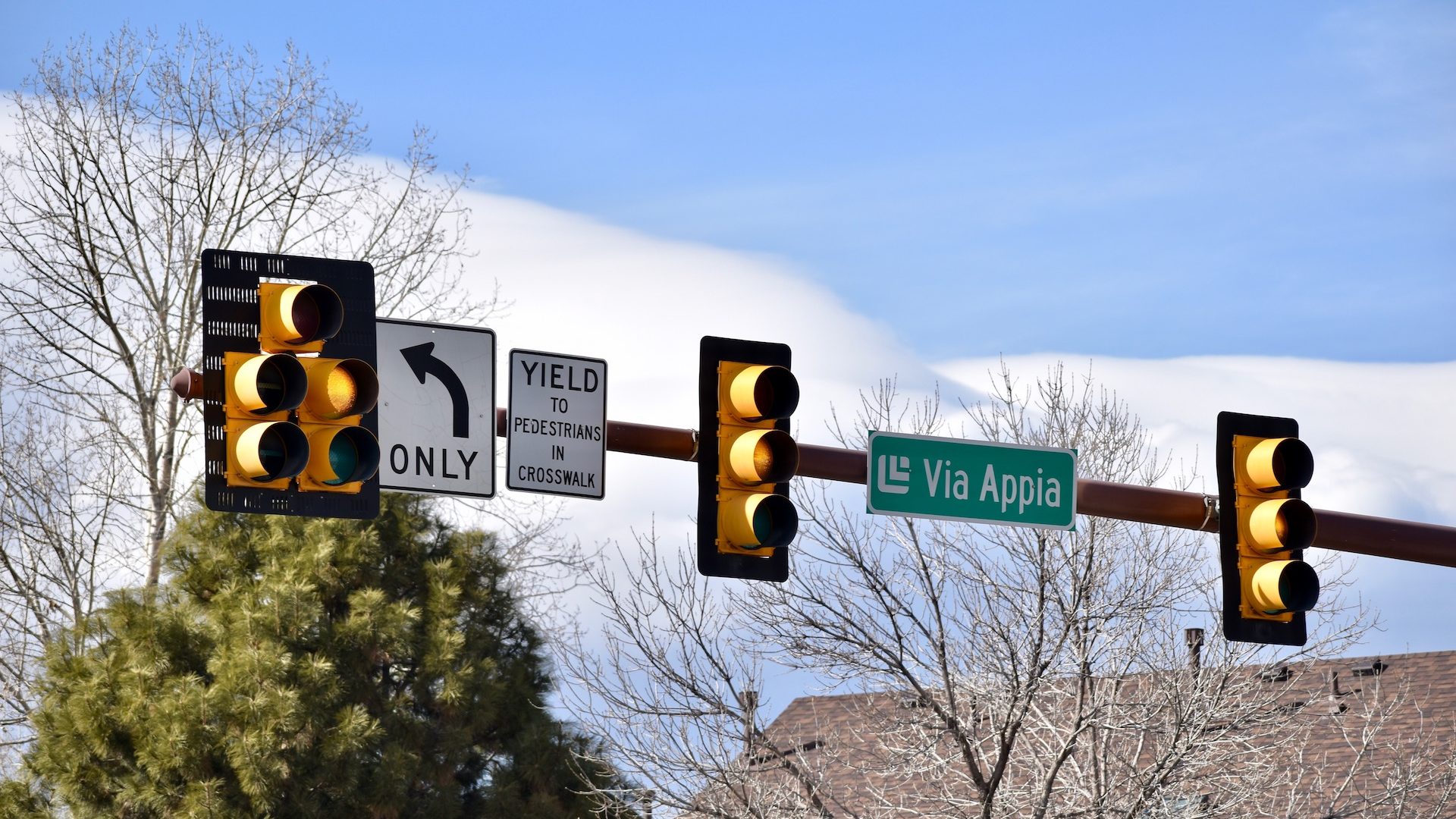

Have you ever noticed that the traffic light on a busy road with a higher speed limit stays yellow longer than a road with a slower speed limit? This length, known as the yellow change interval, is calculated through a complex equation that determines how long a traffic signal should warn drivers before it turns red and becomes illegal for commuters to enter the intersection. For some time, objectors of red light cameras have argued that the time of a yellow light is far too short, and after a recent meeting, the body responsible for recommending best practices agrees—at least partially.
In August, a panel of experts from the Institute of Transportation Engineers (ITE) came together to discuss an appeal filed on behalf of a group of engineers, including Mats Jarlstrom, a man who was famously fined for the “unlicensed practice of engineering” after he criticized Oregon’s red light camera system. Jarlstrom and three of his colleagues provided a presentation and argued that the formula used to determine the yellow change interval—originally published in 1965—was flawed and didn’t fit the criteria of every intersection.
This number was originally calculated by factoring in the Perception Response Time (PRT), the 85th percentile of approach speed in miles per hour, and a pre-determined deceleration rate. In 1982, the formula was revised to also take into account the approach grade of the road. While the PRT and deceleration rate both have pre-defined default values, there are two fairly important variables: the grade and the approach speed. Because the approach speed is often unknown, the formula is usually calculated with the approach speed factored in as the posted speed limit, plus seven miles per hour. A separate calculation is used for both left and right turns.
The panel took Jarlstrom’s argument into consideration and agreed that its current best practices may not properly suit drivers who are making turns. Rather, the panel reached a decision that its “one-size-fits-all” approach does not properly safeguard this type of driving and would need to be revisited.
As a second matter, the panel was asked to revisit the way it calculates approach speed in relation to drivers making turns. The previous recommendation was to subtract five mph from the approach speed in order to calculate the yellow change interval for left-turn movements. After reviewing the data provided to the panel, it became apparent that there are more flexible ways to determine the correct change interval in a given turning scenario when road geometry or driving characteristics differ.
The panel also weighed in on five other items in the same meeting, including the estimation of thru-movement approach speed, enforcement tolerances, and more. For each other circumstance, the panel ruled against revising the current recommended practices.
But perhaps the greatest victory for Jarlstrom is the panel’s newly penned recommendation that ITE place stronger language in its guidelines to point out that its recommended practices should not be used to determine traffic violations using zero-tolerance red light cameras.
It’s likely that this ruling, if adopted into best practices, might not be noticed immediately (if at all) in one’s hometown. However, the safety benefits might help ensure that a driver has more time to make a crucial decision that could impact safety, and the red light camera recommendation just might save you from an accidental ticket in the future.